The Arizona Elk Society, in cooperation with the United States Forest Service (USFS), has asked Natural Channel Design Engineering (NCDE) to create a plan that addresses headward erosion and widening in the meadow system. Arizona Elk Society volunteer handcrews constructed the bulk of the project across two phases. Video further explaining the project can be found here for Phase 1/2 and Phase 2/3. A series of active headcuts are working upstream through a meadow system in Long Valley, near Clints Well, AZ. Observations indicated the meadow is drying out due to the initiation of a channel network which will result in the eventual loss of this important meadow system on the Coconino National Forest. These meadow systems are important habitat for elk and other wildlife. Grassland productivity is dependent on high soil moisture and occasional flooding which is impaired by headcutting and incision of channels. Headcut systems can move rapidly through soft soils such as those found in arid land meadow soil types. Headcutting in meadows is especially troublesome since many arid meadow systems do not support channels, but only dispersed flows across the meadow systems.
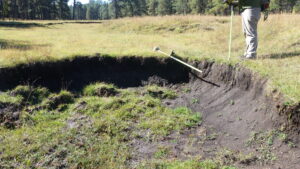
Headcut in Long Valley Meadow
NCDE developed a phased treatment plan based upon the field work and hydrologic analysis of the project site. The project was designed to be constructed by Arizona Elk Society volunteer hand crews with the aid of heavy equipment. The plan addressed the treatment of headcuts and vertical banks, the installation of grade control structures, and the removal of trees encroaching into the meadow, the removal of Long Valley Tank, rock grade control structures and using Plug and Spread structures to address the channels that have formed downstream of Long Valley Tank. Additionally, a spring currently cut off from the meadow by an incised channel was brought back to the meadow surface and spread across the meadow.
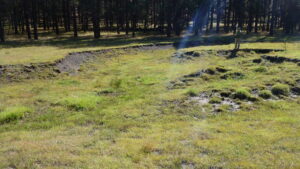
Headcut pre-construction
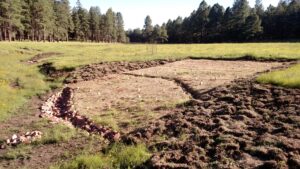
Headcut 3 months post construction
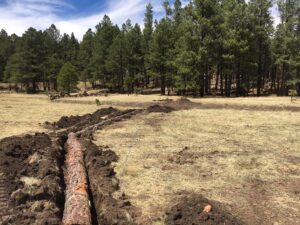
Log Sill during construction
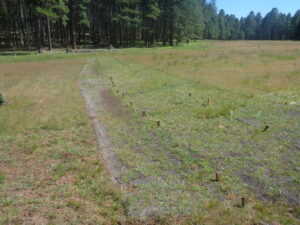
Spreader log sill one year post-construction
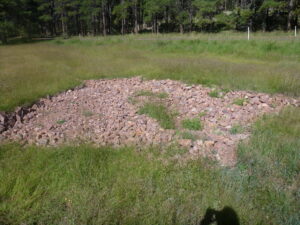
Headcut rock repair one year after construction with dense grass growing into the rock

